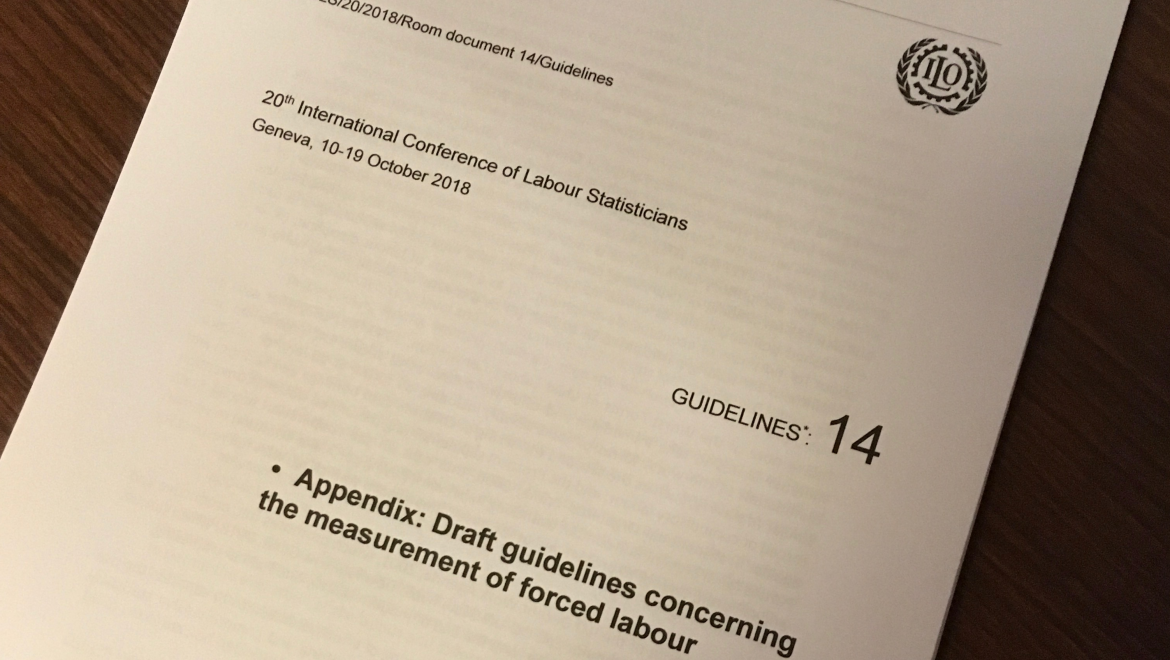Guidelines on how to measure forced labour were approved at the 20th International Conference of Labour Statisticians (ICLS) which took place at the headquarters of the International Labour Organization (ILO) in Geneva from 10-19 October 2018.
The guidelines provide recommendations to national statistical offices and the broader research community on the collection and analysis of forced labour statistics in order to facilitate comparability across countries. They provide guidance on:
- Statistical definitions
- Data collection
- Data sources
- Survey design
- Ethics
- Reporting
“We finally have a standard way to measure forced labour, which is really important if we are going to accurately measure this phenomenon, said Michaelle De Cock, Head of Research and Evaluation Unit in the Fundamentals Branch of the ILO.
“Using the same framework around the world will allow the research community to better understand the nature and extent of forced labour. These guidelines can be used in a variety of national circumstances and sectors and will help policy makers take evidence-based decisions to reduce and ultimately eliminate forced labour.
Countries are encouraged to pilot the guidelines with technical assistance from the ILO through training and capacity building.
Background to the Guidelines
In 2013, The 19th International Conference of Labour Statisticians passed a resolution giving the ILO the mandate to set up a Working Group to discuss and develop international guidelines to harmonize concepts, elaborate statistical definitions, standard lists of criteria and survey tools on forced labour.
As a follow-up to the resolution, six preparatory expert meetings took place to discuss the challenges for adequate sampling tools and statistical definitions for forced labour within the framework of ILO Forced Labour Convention (No. 29) and the Worst Forms of Child Labour Convention (No.182).
A discussion paper on draft guidelines on measuring forced labour was prepared by the ILO based on the outcomes of the six preparatory meetings. A further meeting took place at which participants discussed and provided inputs for the further development of the draft to be presented for consideration at the 20th ICLS.
